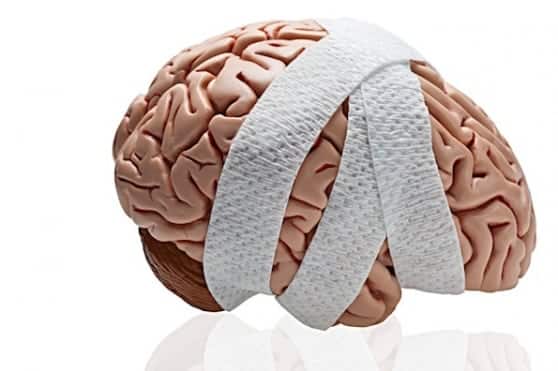
Mild Traumatic Brain Injury: Doubt and Diagnosis
Mild traumatic brain injuries (mTBI) are serious injuries to brain tissue that may leave patients with lasting physiological damage and serious cognitive deficits. These injuries also have long-term effects on victims’ ability to earn a living and perform routine functions of daily living. Unfortunately, mild traumatic brain injuries are often misdiagnosed or dismissed as “inconsequential” by the medical community because they can be difficult to diagnose correctly with conventional scans, x rays and other diagnostic tools available to most clinicians.
Additionally, symptoms of mTBI can appear months after the initial trauma and may mimic those of other diseases. Tragically, patients with mild traumatic brain injuries are often accused of faking or exaggerating their symptoms by doctors who are not up to date on the latest brain imaging techniques, research and treatment modalities. But a study in The American Journal of Psychiatry notes that “…a normal MRI of the brain after mild TBI does not suggest the absence of injury but instead indicates only that any changes in the brain caused by the TBI are below the detection threshold of conventional clinical MRI.”
What Causes Mild Traumatic Brain Injuries?
Our brains are made of soft, pudding-like tissue containing millions of nerve fibers. The human brain is also surrounded by cerebral-spinal fluid and is designed to “float” within the bony casing of our skulls. If the head strikes a fixed object, such as a steering wheel of a car during a car accident, the force of the impact is transmitted to the non-stationary and extremely delicate brain, suspended in fluid inside our skulls.
In an automobile accident, when the accident victim strikes his or her head, the brain can actually move, twist and experiences rotational forces that cause differential movement of brain tissue. Although our skulls are designed to protect and encase our brains, our delicate brain tissue is not designed to withstand such sudden, abrupt trauma (e.g. automobile accidents, shaken baby syndrome). When the brain, which is “floating” inside the protective enclosure of the skull and cerebral spinal fluid, moves inside the skull with enough force, it can actually hit the front and back of the skull. This is a form of TBI called a coup-contrecoup injury and is quite common in automobile accidents (even in low-speed crashes).
When the brain moves and stops abruptly inside the skull, neural cells and axons may be stretched, twisted and sometimes even torn. This can wreak havoc on the precisely balanced structures in a normally functioning brain. The damage isn’t always apparent with conventional medical imaging, however, and can be easily missed by both doctors and patients.
Depression After Mild Traumatic Brain Injuries
According to a study performed at the Department of Neurology at the University of Modena in Italy, doctors found that patients with mild traumatic brain injuries who appeared to have “relatively minor or microscopic” stretching and swelling of axons showed “significant” physiological and cognitive deficits. The most significant finding of this study, however, was the relationship between mild traumatic brain injury and depression. The study’s authors note, “…depression is clearly more evident in the head injured group than in matched controls. Moreover, depression seems a more frequently reported symptom.” The study suggests that 39 percent of patients who experienced a mild traumatic brain injury exhibited clinical symptoms of depression one year after their initial trauma. The study’s authors conclude, “…patients who have sustained mild head injuries are at a substantially higher risk of developing depression when compared with an appropriate control group.” Other studies of patients with mild traumatic brain injuries report similar findings. Depression usually occurs within one year of the initial head trauma, but studies show mTBI patients have a substantially increased risk of developing depression for many years after their initial injury.
Other groundbreaking research suggests that earlier head trauma may “prime” a victim of mild traumatic brain injury for more dramatic injury later in life. For example, a previous head injury may put injured brains on “high alert” status from prior injuries. Even if a head injury occurred many years before, researchers theorize that a previously injured brain mobilizes specialized defenses which somehow protect itself from future damage. If an accident victim was previously injured, then receives a subsequent head injury (even if the injury was mild and occurred many years later) their brain may be programmed to “over” react to the stress of their injury, no matter how mild. Injury symptoms are then multiplied in the subsequent brain trauma, and accident victims suffer a greater degree of cognitive and physiological decline (which may explain the greater incidence of delayed onset depression among mTBI patients).
If you have been involved in an automobile accident, it is critically important to seek medical attention immediately after your injury. Take careful note of all of your symptoms. However, do not assume that a lack of “obvious” signs of head trauma (broken bones, lacerations, trauma that shows up on an x-ray or MRI) means that you have escaped without injury. Symptoms of mild traumatic head injuries can occur months or even years after a car accident, and can seriously affect your health and wellbeing. Let the experienced personal and traumatic brain injury attorney team at Hardy, Wolf and Downing assess your case, help you deal with insurance companies, doctors and answer any questions you may have regarding your rights. Our experienced Maine personal injury team can help you and your family get the fair and just compensation you deserve.

